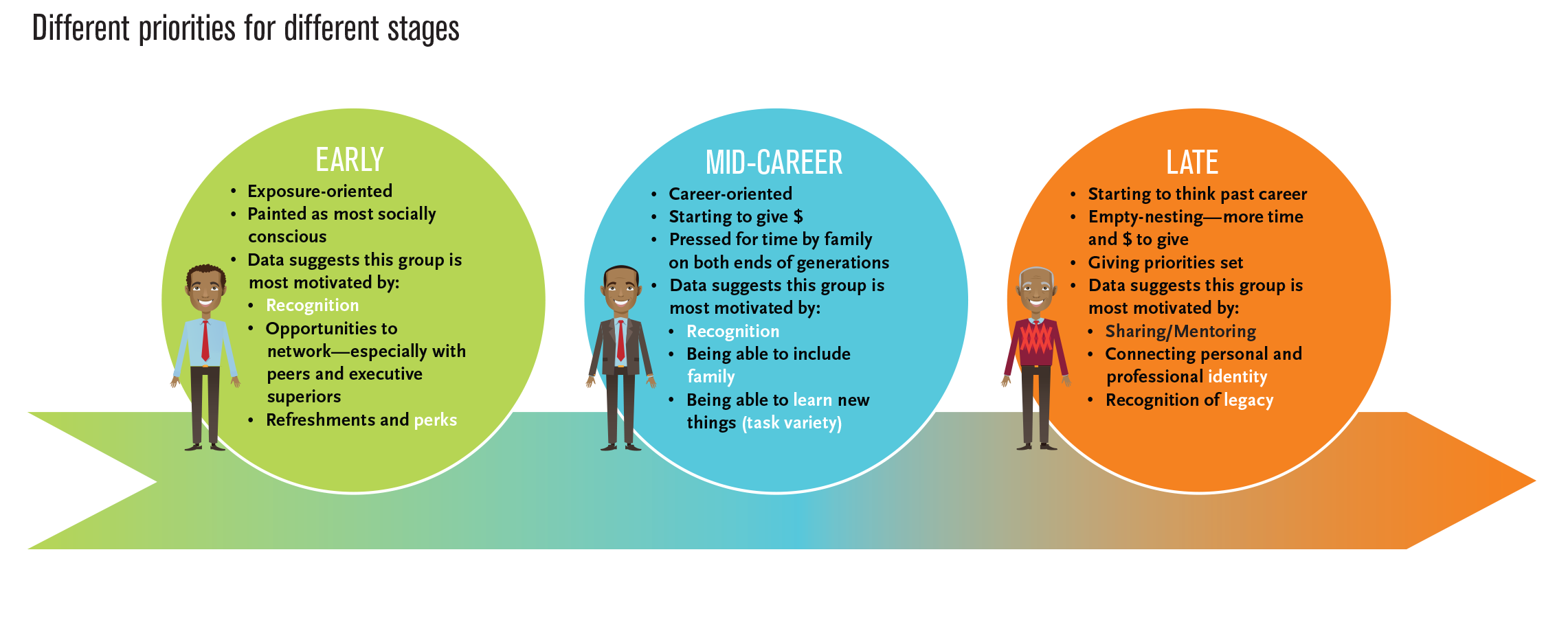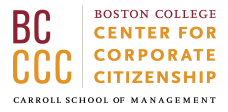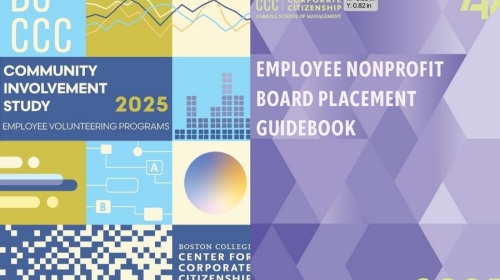View all resources on Corporate Community Involvement >
With longer work hours and shorter tenures on average, it is more difficult than ever to keep employees engaged with their jobs. The Gallup’s 2013 State of the Global Workplace study describes engaged employees as people who are psychologically committed to their jobs and likely to be making positive contributions to their organizations. In that study, it was found that 87 percent of employees are disengaged from their jobs.[i]
In the United States, the percentage of disengaged workers is lower, but continues to hover around 70 percent.[ii] Gallup classifies disengaged employees into two groups: those who are just getting by and workers who are trying to undermine their companies’ efforts. This latter group—actively disengaged employees—made up 18 percent of the U.S. workforce at the end of 2012.[iii]
Gallup estimates that actively disengaged employees cost U.S. businesses $450–$550 billion per year in productivity losses.[iv] Turnover is one of the major contributors to these costs and represents approximately 12 percent of an average company’s pre-tax income, as companies must pay costs related to loss of productivity, overtime and/or contractors’ fees, and hiring and onboarding.[v] Gallup’s 2012 meta-analysis, which used 263 studies across 192 companies, found that work units in the top quartile of employee engagement outperformed the bottom quartile on the following measures:[vi]
- Financial: 22 percent higher profitability, 25 percent –65 percent lower turnover, and 28 percent lower shrinkage (theft)
- Stakeholder relations: 10 percent higher customer ratings
- Employee performance: 21 percent higher productivity and 37% lower absenteeism
- Employee safety: 48 percent fewer employee safety incidents
In the 2015 Community Involvement Study, more than 90 percent of companies identified increased employee engagement as one of the top three benefits of their volunteer programs. Sixty percent of companies with volunteer programs evaluate the relationship between employee volunteer programs and employee engagement. Close to 90 percent of companies that measure the connection between on-the-job volunteering and employee engagement found a positive correlation between employee participation in these programs and higher employee engagement scores.
Employees who participate in corporate volunteering report more commitment and loyalty to their company than their peers who do not volunteer.[vii]
Employees may be as motivated by the opportunity to do well as to do good
According to a 2010 study, while the desire to simply do good in the community may be the reason many decide to volunteer outside of work, it is not what drives people to corporate volunteer programs. Instead, many are drawn by skill development and networking opportunities.[viii]
According to a 2013 study, both private and public recognition can increase volunteerism.[ix] In this study, companies that recognize exemplary employees are more likely to report success with employee volunteer participation. Employees may be recognized externally in local and/or national news, internally through awards, or a combination of both. Companies that recognize employees both internally and externally report an average employee participation rate of 39 percent compared to 32 percent for companies that do not offer recognition.
Engaging employees across ages and stages
To communicate volunteer efforts effectively, companies must consider how to engage employees at different stages in their careers. Research finds that employees in the earlier stages of their careers (18-39) are most motivated by career development and promotion initiatives and opportunities.[x] Older employees (55+), however, are most deeply engaged by supervisor support and recognition.[xi]

View all Community Involvement resources on the topic page:

[i] Gallup. (2013). State of the global workplace: Employee engagement insights for business leaders worldwide. Retrieved from http://www.gallup.com/services/178517/state-
global-workplace.aspx
[ii] Adkins, A. (2015, July 9). U.S. employee engagement unmoved in June at 31.9%. Retrieved from Gallup: http://www.gallup.com/poll/184061/employee-engagement-
unmoved-june.aspx?utm_source= EMPLOYEE_ENGAGEMENT&utm_medium=topic&utm_campaign=tiles
[iii] Sorensen, S. & Garman, K. (2013, June 11). How to tackle U.S. employees’ stagnating engagement. Retrieved from Gallup: http://www.gallup.com/businessjournal/162953/ tackle-employees-stagnating-engagement.aspx
[iv] Sorensen, S. & Garman, K. (2013, June 11).
[v] PricewaterhouseCoopers. (2006). Driving the bottom line: Improving retention. Retrieved from http://www.pwc.com/us/en/hr-saratoga/assets/saratoga-improving-retention.pdf
[vi] Sorensen, S. (2103, June 20). How employee engagement drives growth. Retrieved from Gallup: http://www.gallup.com/businessjournal/163130/employee-engage-
ment-drives-growth.aspx
[vii] Jones, D. A. (2010). Does serving the community also serve the company? Using organizational identification and social exchange theories to understand employee responses to a volunteerism programme. Journal of Occupational and Organizational Psychology, 83(4), 857-878.
[viii] Jones, D. A. (2010).
[ix] Winterich, K.P., Mittal, V., & Aquino, K. (2013). When does recognition increase charitable behavior? Toward a moral identity-based model. Journal of Marketing, 77, 121-134.
[x] Boone, J. B., McKechnie, S., & Swanberg, J. (2011). Predicting employee engagement in an age-diverse retail
workforce. Journal of Organizational Behavior, 32, 173-196.
[xi] Boone, J. B., et al. (2011).









